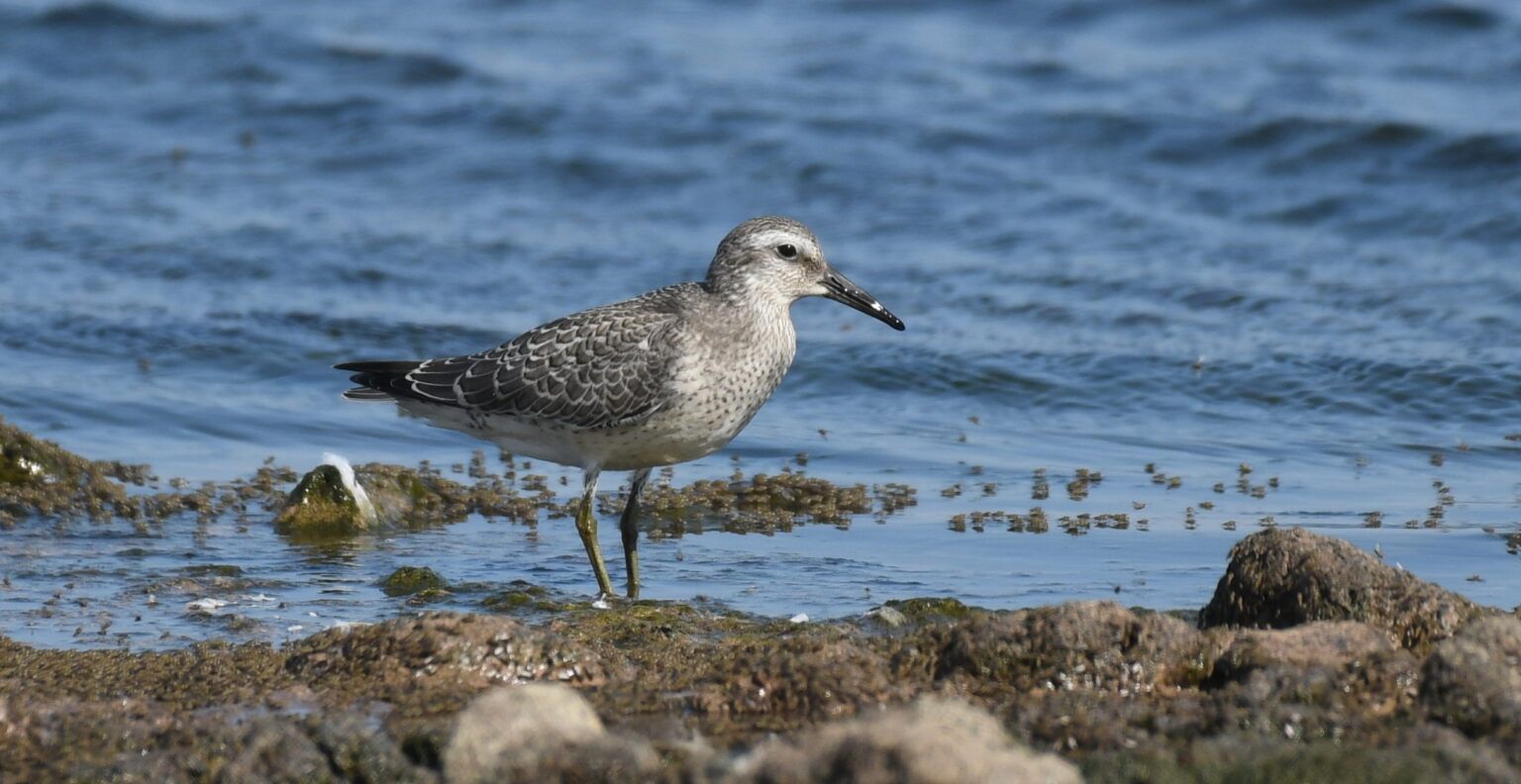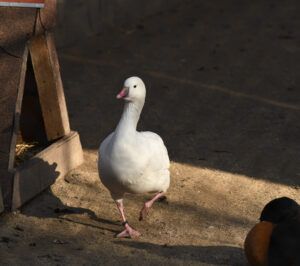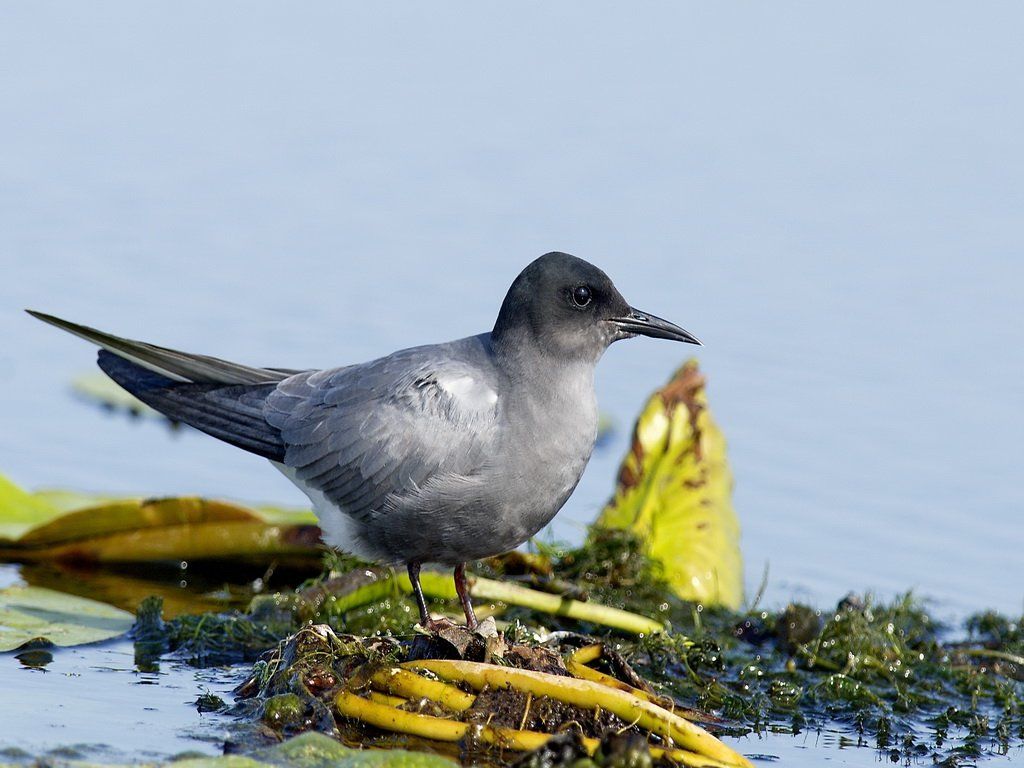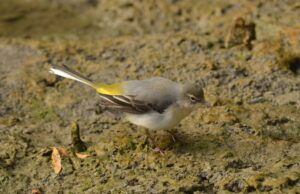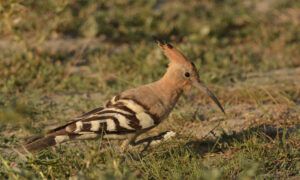The red knot (Calidris canutus) (just knot in English-speaking Europe) is a medium-sized shorebird which breeds in tundra and the Arctic Cordillera in the far north of Canada, Europe, and Russia. It is a large member of the Calidris sandpipers, second only to the great knot. Six subspecies are recognised.
Their diet varies according to season; arthropods and larvae are the preferred food items at the breeding grounds, while various hard-shelled molluscs are consumed at other feeding sites at other times. North American breeders migrate to coastal areas in Europe and South America, while the Eurasian populations winter in Africa, Papua New Guinea, Australia, and New Zealand. This species forms enormous flocks when not breeding.
The red knot was first described by Linnaeus in the landmark 1758 tenth edition of his Systema Naturae as Tringa canutus. One theory is that it gets its name and species epithet from King Cnut; the name would refer to the knot’s foraging along the tide line and the story of Cnut and the tide. There appears to be no historical foundation for this etymology. Another etymology is that the name is onomatopoeic, based on the bird’s grunting call note.
The red knot and the great knot were originally the only two species placed in the genus Calidris, but many other species of sandpiper were subsequently added. A 2004 study found that the genus was polyphyletic and that the closest relative of the two knot species is the surfbird (currently Aphriza virgata).
Population relatedness and divergence. The diversification events may be associated with the Wisconsinan (Weichselian) glaciation 18,000 to 22,000 years ago; the opening of the ice-free corridor in North America 12,000 to 14,000 years ago; and the Holocene climatic optimum 7,000 to 9,000 years ago.
There are six subspecies,in order of size;
- C. c. roselaari – (Tomkovich, 1990) – (largest)
- C. c. rufa – (Wilson, 1813)
- C. c. canutus – (Linnaeus, 1758)
- C. c. islandica – (Linnaeus, 1767)
- C. c. rogersi – (Mathews, 1913)
- C. c. piersmai – (Tomkovich, 2001) – (smallest)
Studies based on mitochondrial sequence divergence and models of paleoclimatic changes during the glacial cycles suggest that canutus is the most basal population, separating about 20,000 years ago (95% confidence interval: 60,000–4,000 years ago) with two distinct lineages of the American and Siberian breeders emerging about 12,000 years ago (with a 95% confidence interval: 45,000–3,500 years ago).
In the breeding season, the red knot has a circumpolar distribution in the high Arctic, then migrates to coasts around the world from 50° N to 58° S. The red knot has one of the longest migrations of any bird. Every year it travels more than 9,000 mi (14,000 km) from the Arctic to the southern tip of South America. The exact migration routes and wintering grounds of individual subspecies are still somewhat uncertain. The nominate race C. c. canutus breeds in the Taymyr Peninsula and possibly Yakutia and migrates to Western Europe and then down to western and southern Africa. C. c. rogersi breeds in the Chukchi Peninsula in eastern Siberia, and winters in eastern Australia and New Zealand. Small and declining numbers of rogersi (but possibly of the later described piersmai) winter in the mudflats in the Gulf of Mannar and on the eastern coast of India. The recently split race C. c. piersmai breeds in the New Siberian Islands and winters in north-western Australia. C. c. roselaari breeds in Wrangel Island in Siberia and north-western Alaska, and it apparently winters in Florida, Panama and Venezuela. C. c. rufa breeds in the Canadian low Arctic, and winters South America, and C. c. islandica breeds in the Canadian high Arctic as well as Greenland, and winters in Western Europe.
Birds wintering in west Africa were found to restrict their daily foraging to a range of just 2–16 km2 (0.77–6.18 sq mi) of intertidal area and roosted a single site for several months. In temperate regions such as the Wadden Sea they have been found to change roost sites each week and their feeding range may be as much as 800 km2 (310 sq mi) during the course of a week.
B95, also known as Moonbird, is a noted individual of the subspecies C. c. rufa. A male, he has become famous amongst conservationists for his extreme longevity — he was aged at least 20 as of his last sighting in May 2014.
An adult red knot is the second largest Calidris sandpiper, measuring 23–26 cm (9.1–10.2 in) long with a 47–53 cm (19–21 in) wingspan. The body shape is typical for the genus, with a small head and eyes, a short neck and a slightly tapering bill that is no longer than its head. It has short dark legs and a medium thin dark bill. The winter, or basic, plumage becomes uniformly pale grey, and is similar between the sexes. The alternate, or breeding, plumage is mottled grey on top with a cinnamon face, throat and breast and light-coloured rear belly. The alternate plumage of females is similar to that of the male except it is slightly lighter and the eye-line is less distinct. Canutus, islandica and piersmai are the “darker” subspecies. Subspecies rogersi has a lighter belly than either roselaari or piersmai, and rufa is the lightest in overall plumage. The transition from alternate to basic plumages begins at the breeding site but is most pronounced during the southwards migration. The molt to alternate plumage begins just prior to the northwards migration to the breeding grounds, but is mostly during the migration period.
The large size, white wing bar and grey rump and tail make it easy to identify in flight. When feeding the short dark green legs give it a characteristic ‘low-slung’ appearance. When foraging singly, they rarely call, but when flying in a flock they make a low monosyllabic knutt and when migrating they utter a disyllabic knuup-knuup. They breed in the moist tundra during June to August. The display song of the male is a fluty poor-me. The display includes circling high with quivering wing beats and tumbling to the ground with the wings held upward. Both sexes incubate the eggs, but the female leaves parental care to the male once the eggs have hatched.
Juvenile birds have distinctive submarginal lines and brown coverts during the first year. In the breeding season the males can be separated with difficulty (<80% accuracy in comparison to molecular methods) based on the more even shade of the red underparts that extend towards the rear of the belly.
The weight varies with subspecies, but ranges between 100 and 200 g (3.5 and 7.1 oz). Red knots can double their weight prior to migration. Like many migratory birds they also reduce the size of their digestive organs prior to migration. The extent of the atrophy is not as pronounced as species like the bar-tailed godwit, probably because there are more opportunities to feed during migration for the red knot..Red knots are also able to change the size of their digestive organs seasonally. The size of the gizzard increases in thickness when feeding on harder foods on the wintering ground and decreases in size while feeding on softer foods in the breeding grounds. These changes can be very rapid, occurring in as little as six days.
On the breeding grounds, knots eat mostly spiders, arthropods, and larvae obtained by surface pecking, and on the wintering and migratory grounds they eat a variety of hard-shelled prey such as bivalves, gastropods and small crabs that are ingested whole and crushed by a muscular stomach.
While feeding in mudflats during the winter and migration red knots are tactile feeders, probing for unseen prey in the mud. Their feeding techniques include the use of shallow probes into the mud while pacing along the shore. When the tide is ebbing, they tend to peck at the surface and in soft mud they may probe and plough forward with the bill inserted to about 1 cm (0.39 in) in depth. The bivalved mollusc Macoma is their preferred prey on European coasts, swallowing them whole and breaking them up in their gizzard. In Delaware Bay, they feed in large numbers on the eggs of horseshoe crabs which spawn just as the birds arrive in mid-summer. They are able to detect molluscs buried under wet sand from changes in the pressure of water that they sense using Herbst corpuscles in their bill. Unlike many tactile feeders their visual field is not panoramic (allowing for an almost 360 degree field of view), as during the short breeding season they switch to being visual hunters of mobile, unconcealed prey, which are obtained by pecking. Pecking is also used to obtain some surface foods in the wintering and migratory feeding grounds, such as the eggs of horseshoe crabs.
The red knot is territorial and seasonally monogamous; it is unknown if pairs remain together from season to season. Males and females breeding in Russia have been shown to exhibit site fidelity towards their breeding locales from year to year, but there is no evidence as to whether they exhibit territorial fidelity. Males arrive before females after migration and begin defending territories. As soon as males arrive, they begin displaying, and aggressively defending their territory from other males.
Rare bird in the Danube Delta, especialy come in migration in autumn.
photo :Mihai BACIU

